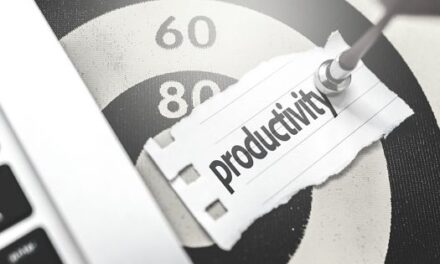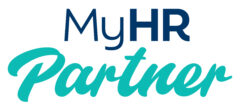As the end of the financial year approaches, it’s a good time to take a look at your profitability and potential tax liability for the year. There are a number of strategies which if implemented by June 30, may reduce the liability to the Taxation Office.

-
Immediate Tax Deduction for Assets Costing Less than $20,000
If you need to buy capital assets, and your business has turnover of less than $2m, you may qualify for an immediate write off where the asset costs less than $20,000. The concession is due to end June 2017.
Bear in mind that this saving applies every time a new asset is acquired for under $20,000, so if a business bought multiple assets, each costing under $20,000 but totalling say $100,000 over the course of the year, then the cash flow saving would be five times the above figure, or $25,500.
Also remember that the asset must be less than $20,000. If it costs $20,000 or more you won’t get the immediate deduction, but depending on how much it is and what other assets the business has, you may be able to get a full deduction by June 30 2017 if you buy it in this financial year.
-
Maximise Deductible Super Contributions
Business owners may be able to reduce the overall taxable profit of the business by making additional contributions to superannuation prior to 30 June 2016. The maximum amount that may be contributed and claimed as a tax deduction is $30,000 or $35,000 where you were 49 years of age or more on 30 June 2015.
Super contributions are only deductible if made during the year, so make sure your super fund receives the contributions well before 30th June to allow for potential bank processing delays.
-
Get Your Super Fund Pension Right
If you’re currently drawing a pension from your self-managed super fund (SMSF) make sure you’ve paid yourself the minimum pension required by law. Where there is also a maximum limit (e.g. those on transition to retirement pensions) make sure you also haven’t exceeded that maximum limit.
If you don’t meet these limits the ATO view requires that the fund must pay 15% on its earnings rather than zero. According to ATO statistics, the average size of a SMSF is about $1m. So getting this wrong could work out to be a very expensive mistake.
-
Take Advantage of Capital Losses
If you’ve made some capital gains during the year don’t just accept that you’ll have to pay tax on them. If you’ve got assets (particularly shares) where their current market value is less than what you paid for them, consider selling them and realising the loss. This loss can then be offset against the capital gains you’ve made on other assets.
With Capital Gains Tax (CGT), timing is everything. You don’t want to pay tax on a capital gain this year and then have a loss next year. If you don’t have capital gains next year you may not be able to use the loss and may have to carry it forward for years before you can use it.
Also, if you’re looking to sell an asset at a profit make sure you’ve held it for more than twelve months where possible. The 50% CGT discount only applies if an asset is owned for more than 12 months. A 50% discount could amount to a lot of money if you’ve got a large gain.
Remember – capital losses are offset against a capital gain before the 50% discount is applied, so if you’ve made a capital gain of $10,000, that is discounted down to $5000, to reduce this capital gain down to nil, you will need to realise a $10,000 capital loss not a $5000.
-
Make Effective Use of Dividend Imputation Credits
If you have a company in your business structure you may have imputation credits that you can stream out to shareholders in a tax effective way. If so, take the opportunity to pay these out.
If some shareholders have little or no income in the current year, paying them dividends will literally “pay dividends”. This is because their marginal tax rate may be quite low. Franked dividends carry a credit for the tax previously paid by the company on those profits at 30% (called imputation credits). By paying dividends to shareholders with low income, they may actually get a refund of these excess imputation credits – so real cash back from the ATO.
-
Prepaid Expenses
Businesses qualifying for the small business concessions may want to look at bringing forward some deductions into the 2016 year by prepaying expenses prior to the end of the year. Unlike large business, a small business who prepays up to 12 months of expenses (such as interest or insurance) is able to claim that expense in the year that it is paid provided that the prepayment covers less than 12 months and that period ends before the end of the next financial year. Using this in conjunction with the fact that the tax rate for small business will drop on 1 July will result in a larger tax benefit, sooner. Of course it is important to consider your cash flow requirements before making any large up front payments.
-
Bad Debts
It is important for businesses to review and write off any bad debts before 30 June to ensure that you can get a deduction, so that you do not end up paying tax on income you are not going to receive. These bad debts must physically be written off before 30th June. It is not sufficient to do this when doing your tax return several months later. As always, some form of documentary evidence of the write off (prior to 30th June) is good practice. This could be by way of accounting entries processed before year end or some other form of written record such as a minute. Another requirement is that the debt must have previously been included in your assessable income. If you’re a small business and only recognise income when you’re paid (i.e. cash basis) then you won’t previously have included the debt as assessable income and therefore won’t be eligible to write it off as a bad debt.
-
Trading Stock
The value of trading stock in a business at the end of the year can have a big impact on the overall profit & tax position of a business. There are a number of options available for valuing trading stock, including valuing it at cost price, market selling value or replacement value. You can choose between these options from year to year and item to item and depending on your circumstances this choice can significantly increase or decrease your taxable income. It is also worth reviewing your stock for any old, damaged or obsolete items – you can write these items off in full and get an immediate tax deduction.




















